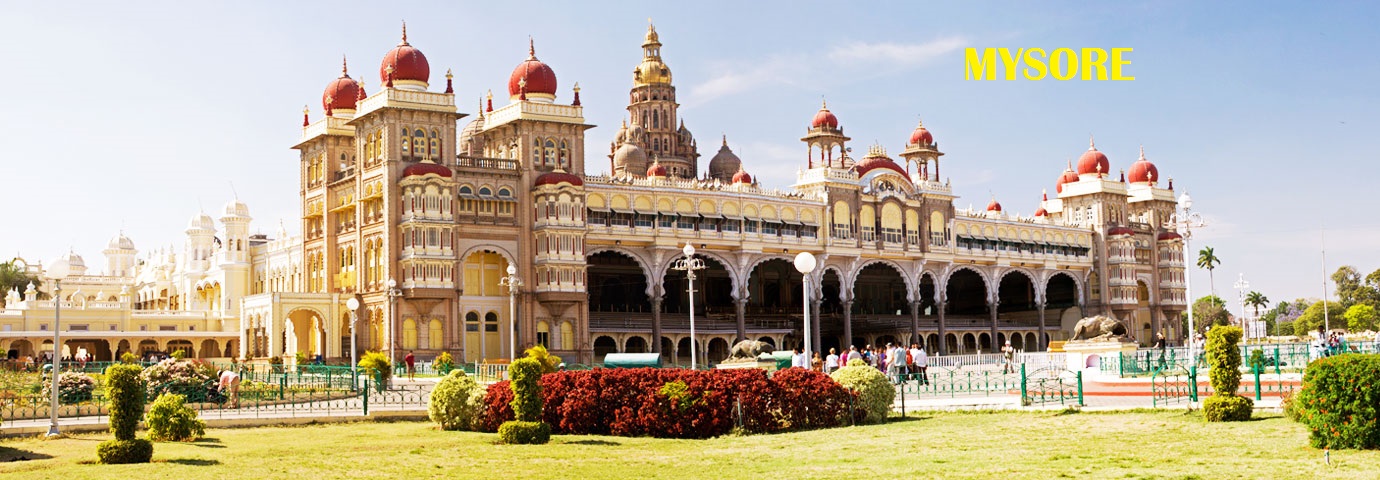Srirangapatnam was the capital of the Mysore State under Tippu Sultan. As a result there are a number of historical monuments related to the life and times of Tippu Sultan. After the death of Tippu Sultan in 1799AD the British shifted the capital back to Mysore.
The Daria Daulat Palace, the Palace of Tippu Sultan in Srirangapatnam is a beautiful Palace built mainly of teakwood. The walls of the Palace are covered with colorful frescoes that represent the reign of Tippu Sultan and the different battles that he fought. Tippu built the Masji-e-Ala or the Juma Majid at Srirangapatna as well. This mosque has tall lofty minarets that dominate the skyline of Srirangapatna. The Ranganathaswamy temple in Srirangapatnam is very famous. It has the idol of Lord Vishnu as Ranganatha reclining on the serpent Ade Shesha
Srirangapatnam
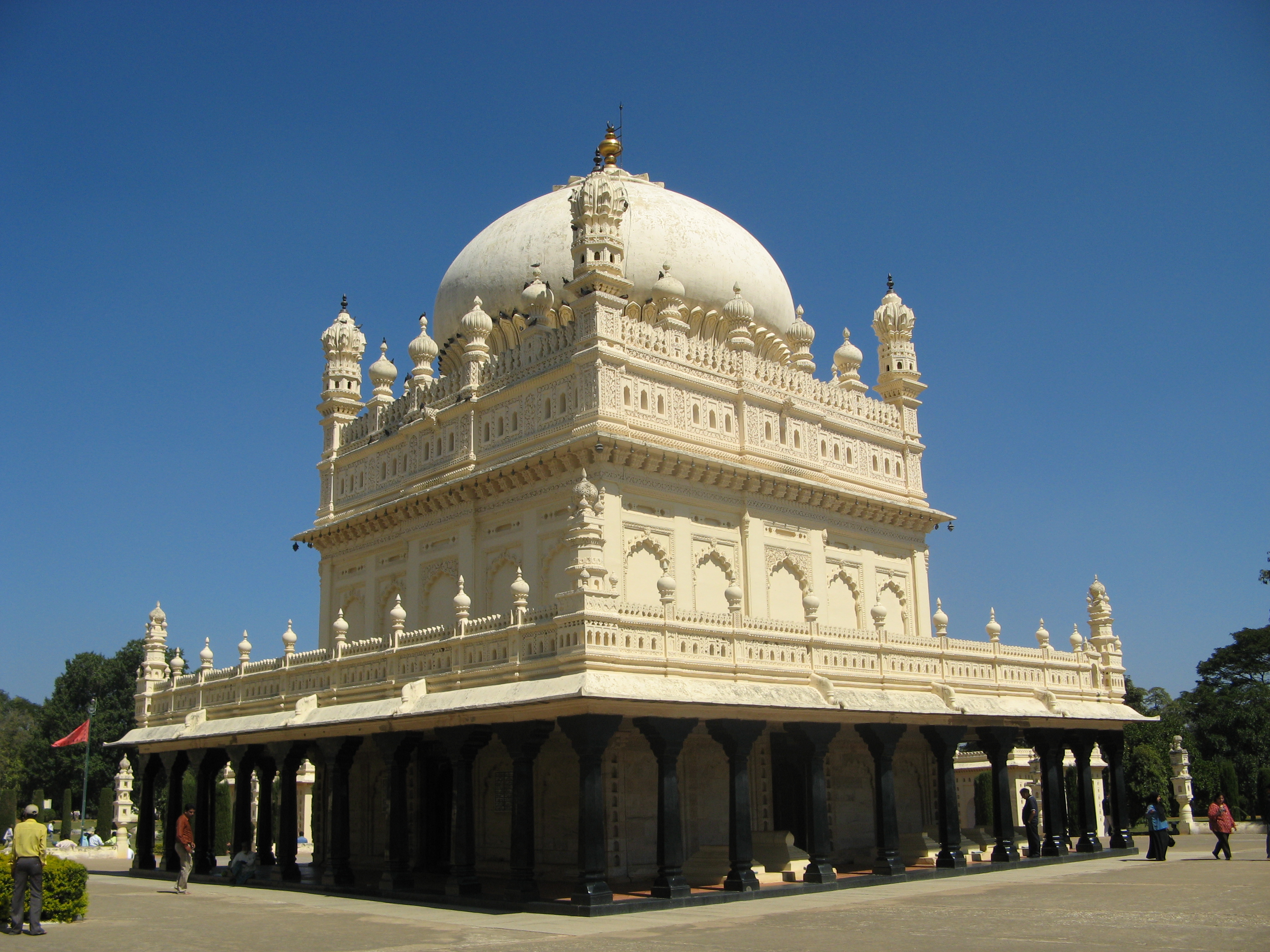
Shivanasamudra
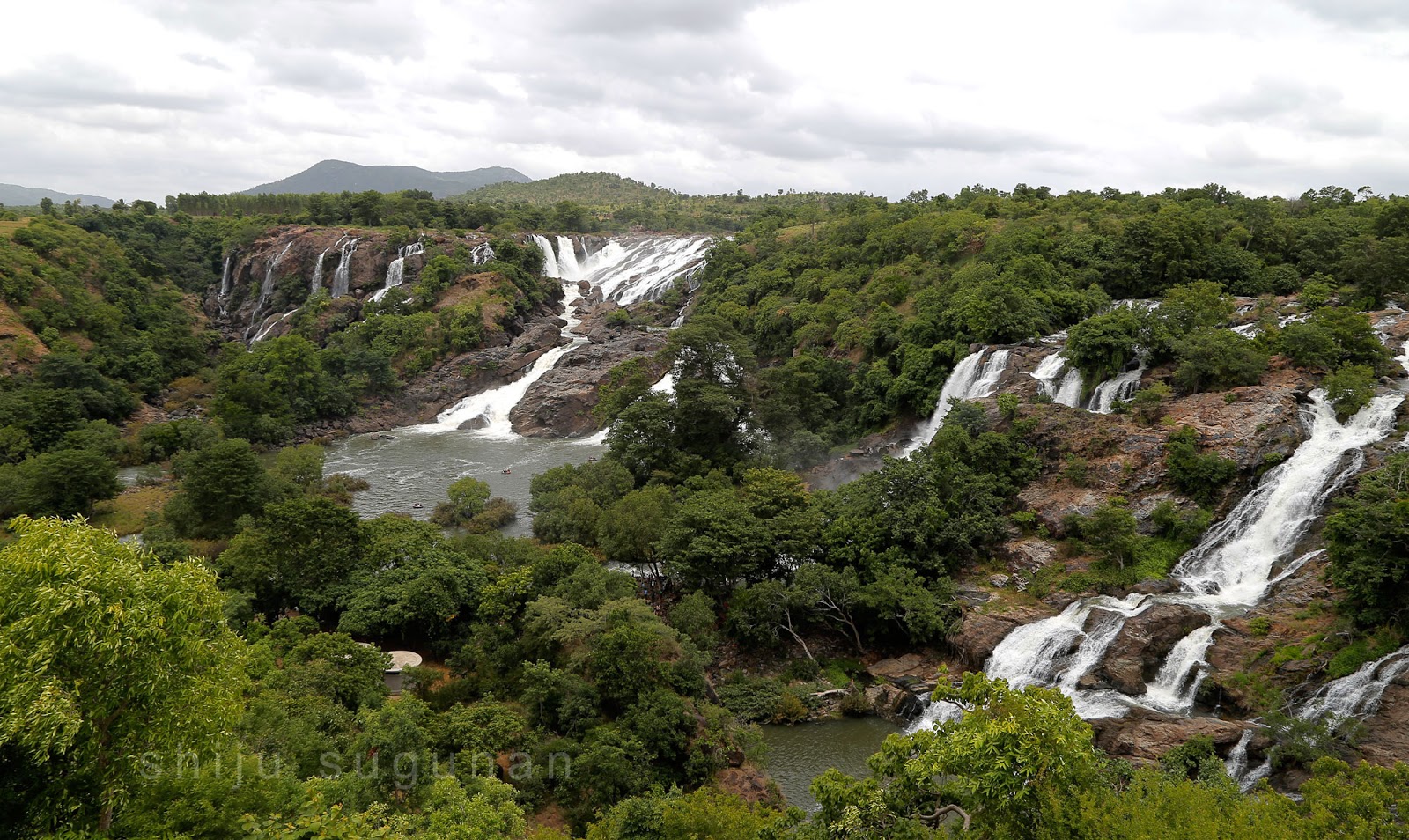
Mysore Palace
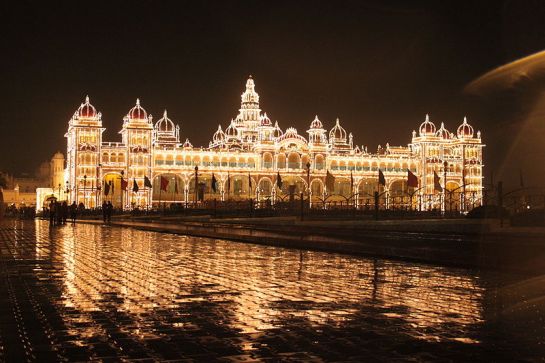
Chamundi Hills
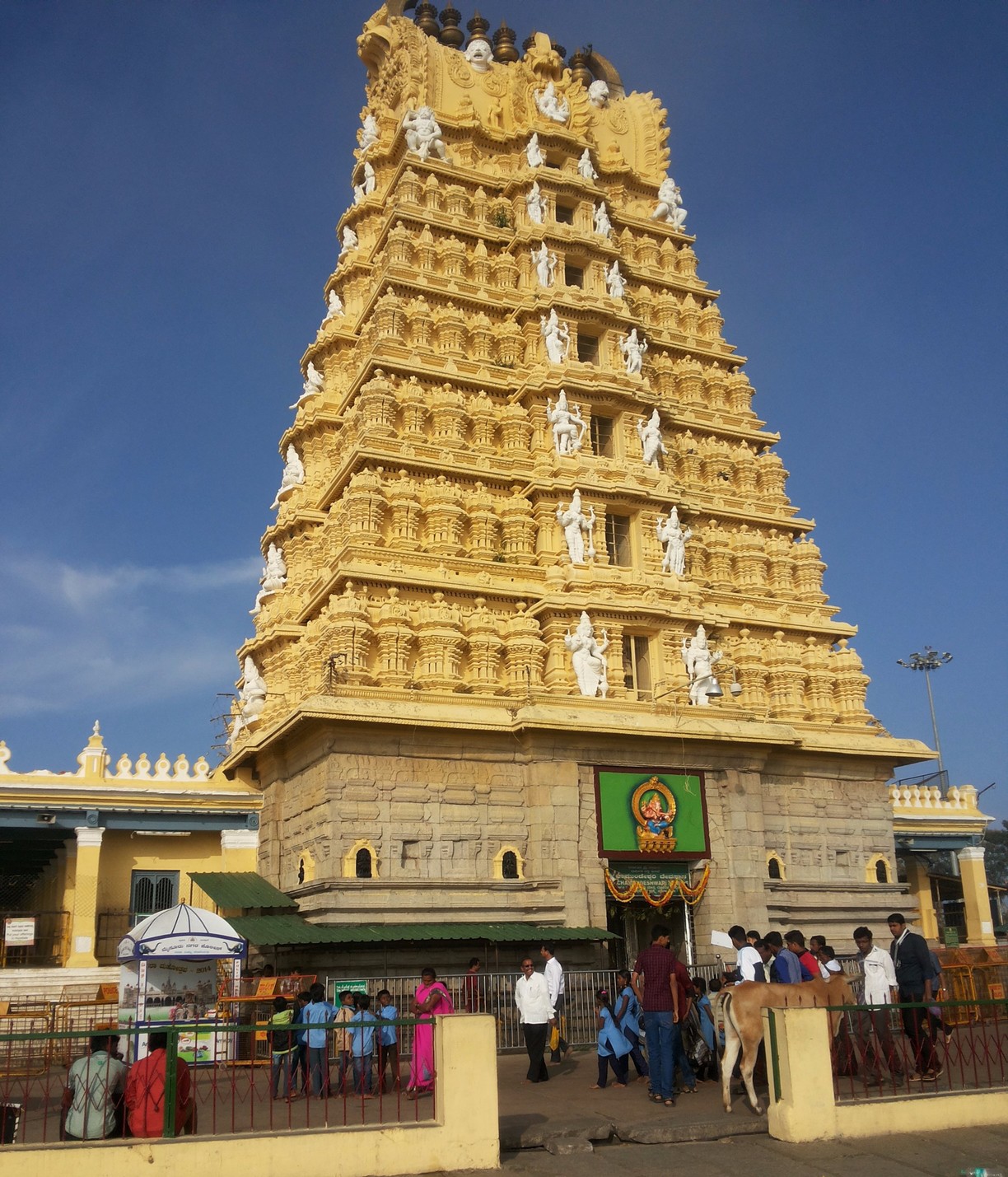
Brindavan Gardens
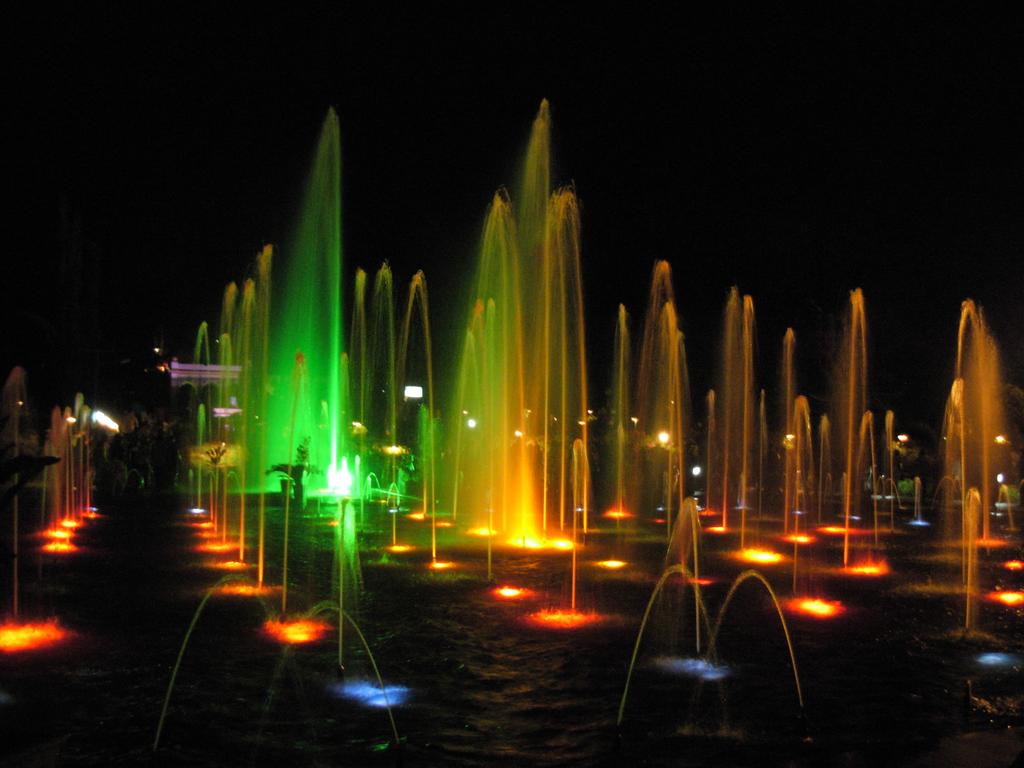
Mysore Zoo
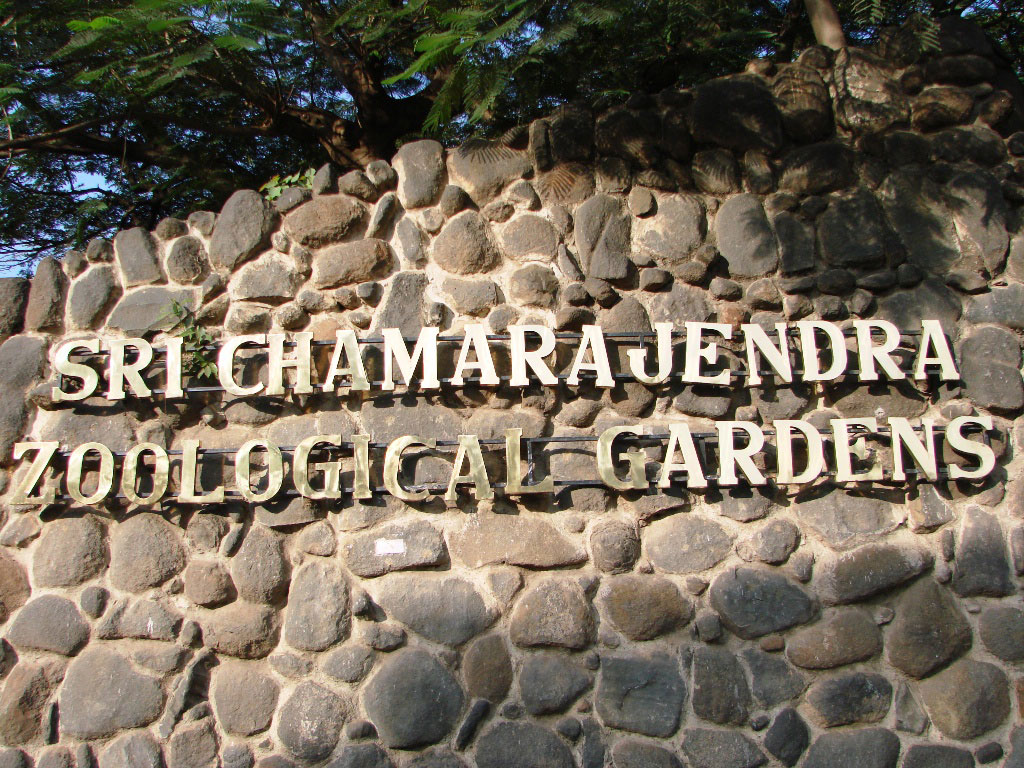
St Philomenas Church
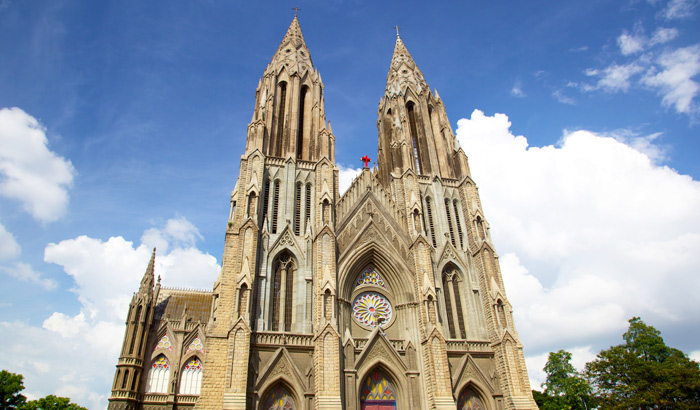
The Railway Museum
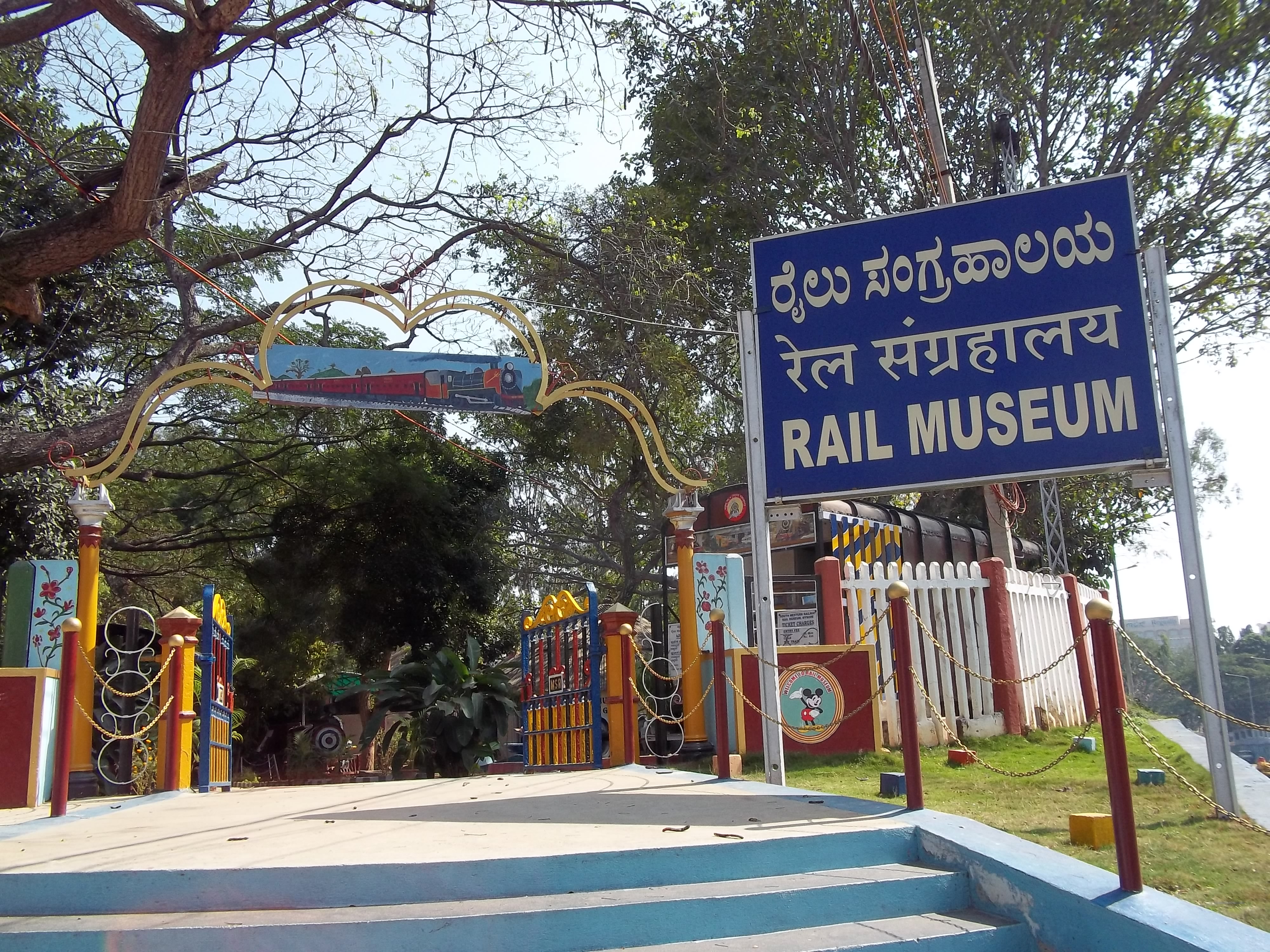
Jaganmohan Palace
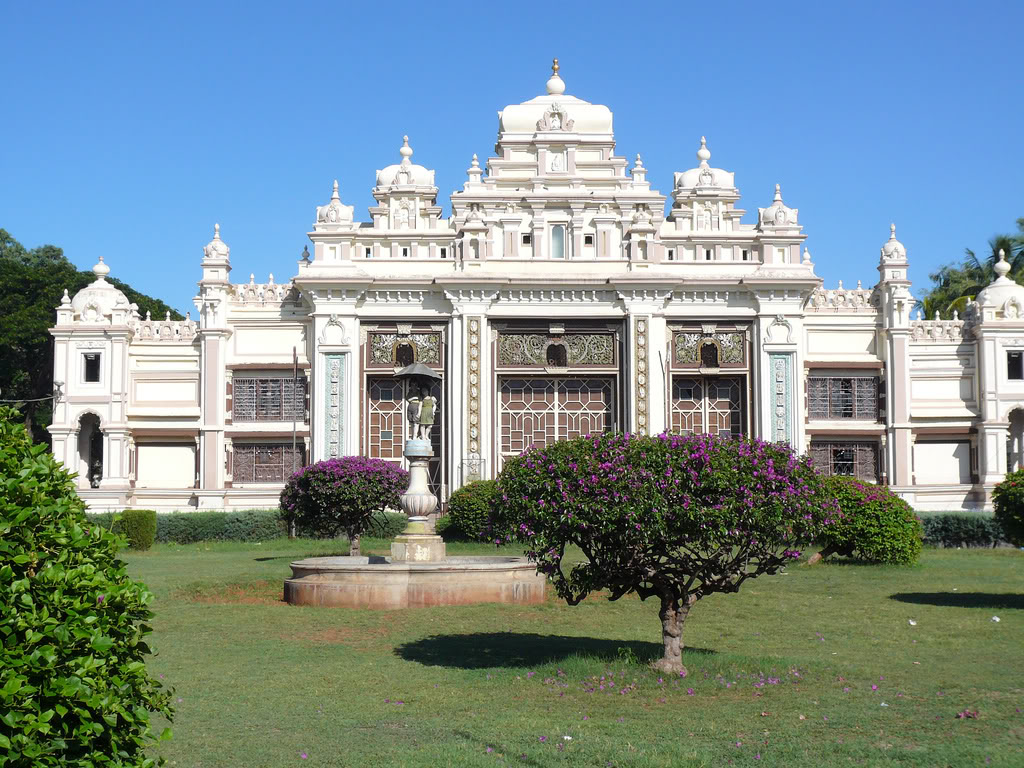
Jayalakshmi Vilas Mansion
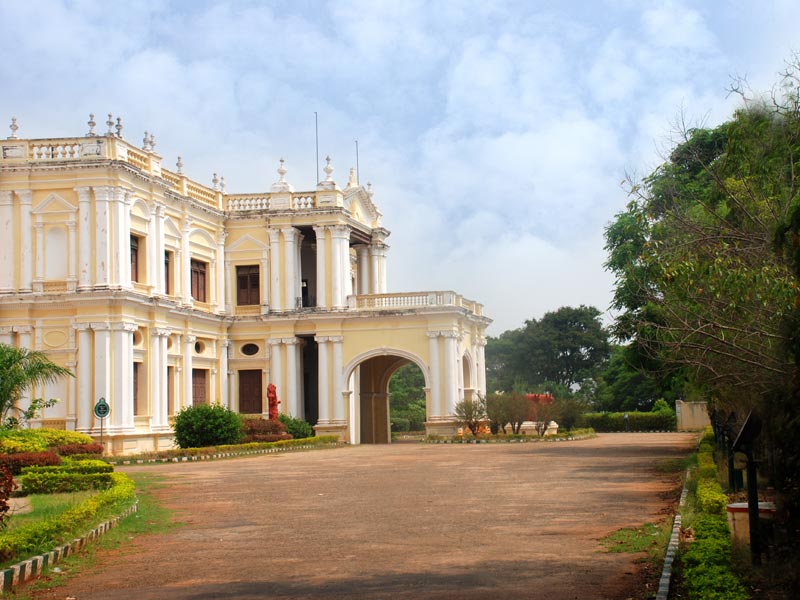
Lalitha Mahal palace
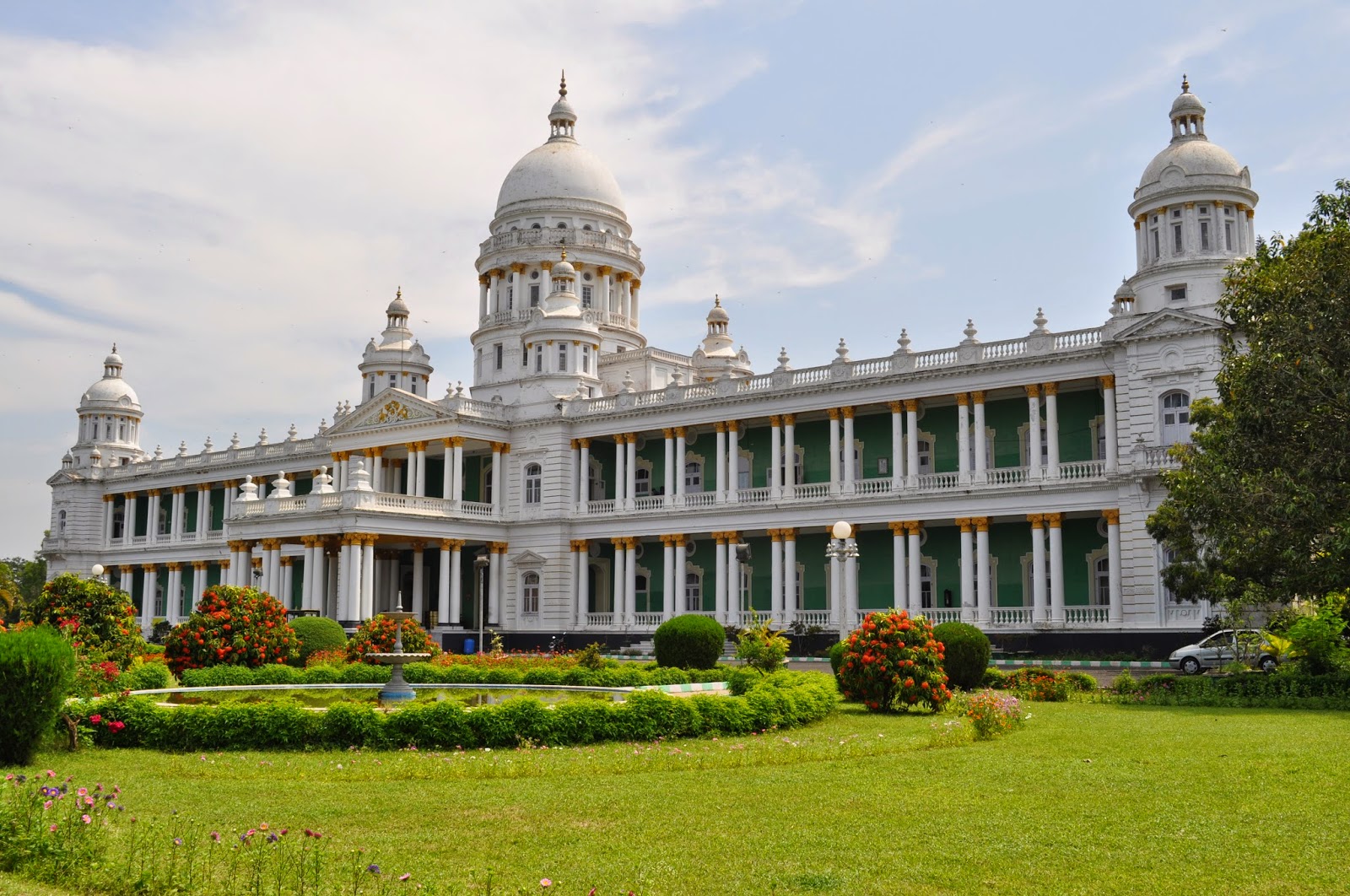
Karanji Lake
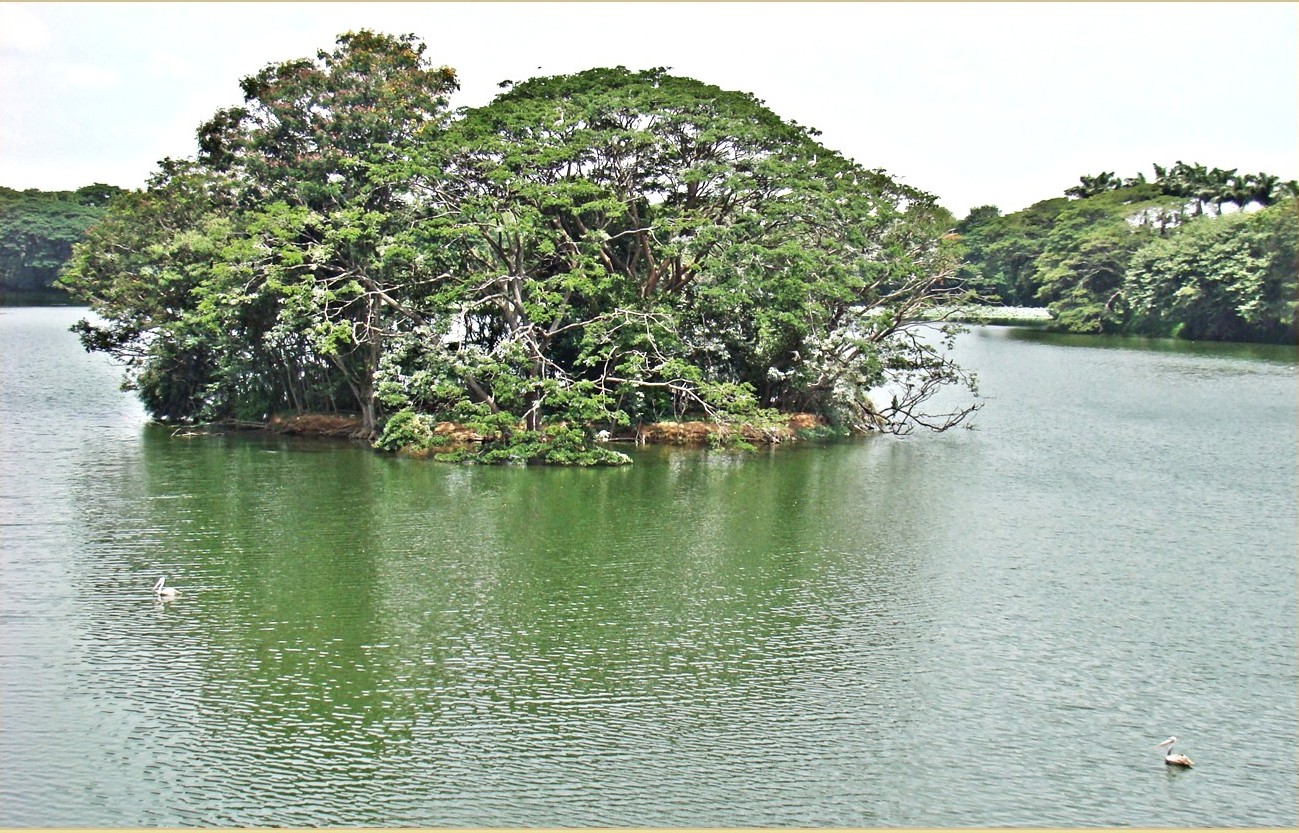
Kukkarahalli Lake
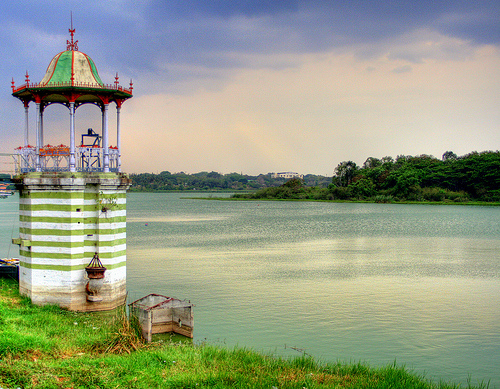
At Shivanasamudra the river Cauvery flows down a deep rocky gorge in two breathtakingly beautiful waterfalls- Bharachukki and Gaganachukki. The sight of these two falls is enchanting and the best time to visit them is during the monsoon. The falls are considered to be one among the 100 best waterfalls in the world. The waterfalls are immaculate and are not easy to approach as they are too steep and rocky.
The Bharachukki and Ganganachukki falls are created as the River Cauvery roars down a 75-meter defile. The river divides around the 700-acre picturesque Shivanasamudra Island. On the one side, it forms the Gaganachukki falls and on the other side are the Bharachukki falls. It is said that the Gaganachukki falls are shaped like a large horsetail and Bharachukki is a jagged crashing cascade. These falls are beautiful no doubt but during the monsoon the falls swell to about 1, 000 feet wide. This is a famous picnic spot as the surroundings are lovely and enjoyable. And one can take a much-needed break from the hectic day-to-day life in nature’s lap at this spot.
Mysore Palace or the Mysore Maharaja Palace is situated in the heart of the city. Mysore Palace is one of the most visited monuments in India. And it’s one of the main palaces in the country, also known as Amba Vilas Palace, was the residence of the Wodeyar Maharaja’s of the Mysore state.
The original palace is constructed of wood, got burnt down in 1897 and was rebuilt in 1912 at the cost of Rs. 42 lakhs. The present Palace built in Indo-Saracenic style and blends together Hindu, Muslim, Rajput, and Gothic styles of architecture. It is a three-storied stone structure, with marble domes and a 145 ft five-storied tower. Above the central arch is an impressive sculpture of Gajalakshmi, the goddess of wealth, prosperity, good luck, and profusion with her elephants. The palace is surrounded by a large garden. Designed by the famous British architect, Henry Irwin, the palace is a treasure house of exquisite carvings and works of art from all over the world.
Chamundi Hills can be viewed from few distances of about 8 to 10 kms and from all the corners of Mysore City. Chamundeshwari temple is situated on the top of Chamundi hill which is about 3,489 ft. above sea level. The temple is devoted to Sri Chamundeshwari, the titular deity of the Mysore Royal Family also described as ‘Mahishasura Mardini’ for having killed the buffalo headed demon Mahishasura. The temple has a very beautiful idol of the goddess wearing a garland of skulls. Goddess Chamundeshwari, also spelled Chamundeswari is an incarnation of Goddess Durga, Goddess Kali is also referred to as the Goddess Chamundi.
The Chamundi temple has always been patronized by the rulers of Mysore. In 1659 Dodda Devaraja Wodeyar built 1,000 steps and huge Nandi, Lord Shiva’s Bull. The magnificent pendent bells around its neck are exquisite. Nandi and the temple beside it are located at the 700th step of the Chamundi Hill. Krishnaraja Wodeyar III repaired the shrine in 1827 and built the present beautiful forty-meter; seven storied Gopura with gold finials, and set up statues of his and his three queens. In 1827, Krishnaraja Wodeyar III made arrangements for festivals and processions and gifted Simhavahana in 1843.
The Brindavan Gardens is a show garden that has a botanical park, with fountains, as well as boat rides under the dam. Diwans of Mysore planned and built the gardens in connection with the building of the dam. The work on laying out Mysore Brindavan garden was started in the year 1927 and finished in 1932.Brindavan Musical FountainsThe garden is laid out in 3 terraces which have water fountains, Ficus trees, foliage plants such as Duranta plumaria and Euphorbia and flowering plants like Celosia, Marigold and bougainvillea. The main attraction of the Brindavan Garden is the Musical Fountain in which bursts of water are synchronized to the music of songs
Mysore Zoo or Shri Chamarajendra Zoological Gardens is one of the oldest zoos in India. It is home to a broad range of wild species and takes the credit for appealing vast number of visitors with its rich breed of flora and fauna. Mysore Zoo is a must in the journey for sightseeing in Mysore. Mysore Zoo is a pleasant experience also because the majority of animals are kept in well spaced enclosures and it’s a delight to see them move around freely. The Mysore zoo abounds in natural vegetation cover and comprises of various rare species of plants & trees that are hard to find somewhere else. It is located inside the city unlike many other Zoos in India and Mysore Zoo is considered to be one of the best and oldest in the world.
This beautiful St Philomenas Church was built in 1956 and is one of the biggest churches in the country. The illuminated church in the evening is a wonderful site not to be missed. St. Philomena’s Cathedral is among the most majestic churches in India. Drawing inspiration from Germany’s Cologne Cathedral, this colossal church built in the neo-Gothic style.
The twin spires of the Cathedral, 175 feet in height, are seen from miles around making it a distinctive city landmark. The main hall or nave of the cathedral can seat up to 800 people and is as delicately conceived as the ornately crafted exterior with beautiful stained glass windows depicting scenes from the birth of Christ, the Last Supper, the Crucifixion, the Resurrection and the Ascension of Christ.
The Railway Museum in Mysore was the first railway museums set up in India, established in 1979 by Indian Railways is the second such museum after the National Railway Museum in Delhi. The Mysore Railway Museum was the one of a type outdoor exhibit of locomotives in India.
One of the main characteristics of the Mysore Railway Museum is the Chamundi Gallery where a number of black and white photographs and paintings have been displayed depicting the development of railways in India. Steam engines including the first steam engine and signaling accessories from the beginning of the railways in India are interesting in their own right. A steam water pump of 1934 and a hand-operated crane of 1885 are also displayed. The museum has a battery-operated mini-train giving a short ride for children on the grounds.
The Jaganmohan Palace was built during ruling of Krishnaraja Wodeyar III in 1861, as an alternate retreat for the royal family. The Mysore Palace, which was the original home of the royal family, was burnt down in a fire and the construction of a new palace in its place was started in the year 1897. The Royal family lived in this palace till the construction of the new Amba Vilas Mysore Palace in 1912. The setting up of Krishnaraja Wodeyar IV took place in a pavilion inside the Jaganmohan Palace in 1902. The early convocations of the Mysore University were also held in this palace. The first session of the Legislative Council of the Mysore state was held here in July 1907. The Legislative Council was then called as the Representative Council and was presided over by the Diwan.
The Jayalakshmi Vilas Mansion was constructed by Sri Chamaraja Wodeyar for the royal comforts of his eldest daughter Jayalakshammanni. It is positioned in the lush green landscape of the University of Mysore premises. The Jayalakshmi Vilas Mansion was built in 1905, with whole building cost of 7 lakh rupees. Jayalakshmi Vilas Palace reflects the rich architectural splendor of the ancient times and represents the zenith of artistic caliber of the local craftsman of former golden era.
The mansion was acquired by the University of Mysore to establish a postgraduate center in its campus known as Manasagangothri. In 2006, an Archeological and Folklore Museum was established in the Jayalakshmi Vilas Mansion with the donation from the Infosys Foundation.
The Lalitha Mahal palace is pure white in color and also has a rambling terrace and landscaped gardens. The palace has exquisitely designed viceroy room, a banquet hall, a dancing floor and an Italian marble staircase and also embellished with small ornamentation’s, which are said to be facsimiles from various palaces in Britain.
The Palace is the second largest palace in Mysore and was transformed into a heritage hotel in 1974. The hotel has maintained the Palace well and its splendor is intact to this day. Now a popular venue for local film shoots and other social gatherings, a visit to the palace may help you understand the mystique of royal Mysore.
Karanji Lake is a scenic lake located at the footsteps of Chamundi Hills and behind Mysore Zoo. Karanji means ‘fountain’ in Kannada. Spread over an area of 90 acres, it is regarded as one of the biggest lakes in Karnataka. Karanji Lake is home to more than 90 species of resident and migratory birds. It also supports several species of butterflies, small mammals and is a good example of wetland ecosystem. The lake attracts painted storks, pelicans and darters and a host of other winged beauties.
Karanji Lake was built by the King of Mysore about 100 years back, as a percolation tank. This lake was used by the residents for bathing, washing, drinking etc. The Mysore Zoo took over the lake in 1976.
Kukkrahalli Lake View Mummadi Krishnaraja Wodeyar was accountable for getting the lake created, in the year 1864, to provide water for irrigation to about 10,000 acres of land outside the city. Reckoned to be a jewel in the crown of Mysore, the pictorial lake, which inspired poet laureate Kuvempu to pen many of his works, provides the much-needed lung-space to the city.
This lake is home to more than 180 species of birds, some of them aquatic. During the migratory season the lake plays host to a variety of winged visitors, some from as far as Siberia.


